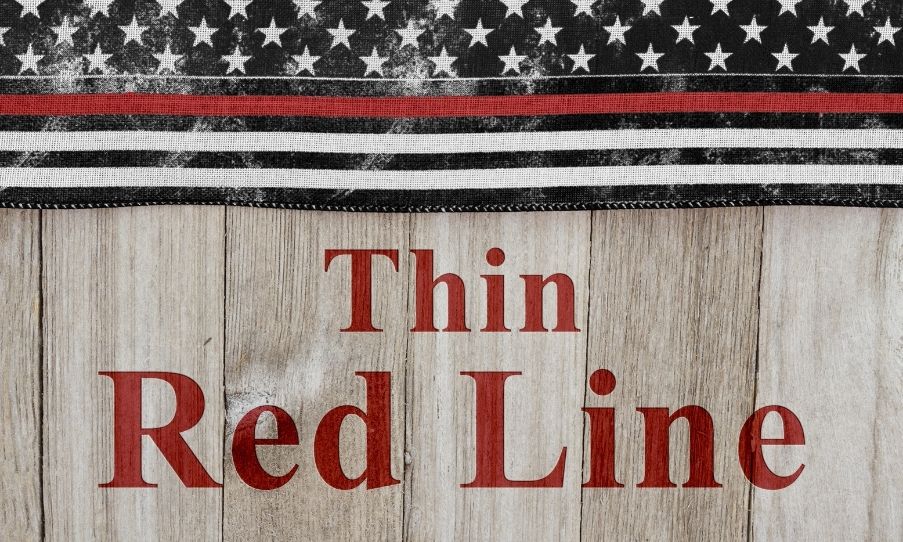
You might have heard of or even seen them before—American flags, mostly black-and-white, with one thin blue or red stripe amongst the monochrome. These flags have received some negative press lately, but neither of them was designed with bad intentions.
These two modified American flags were created to show support for first responders. Wondering how these flags—and the controversy behind them—came to be? Here’s the history behind the thin blue and red line flags.
The Thin Blue Line
The thin blue line is an allusion to the Crimean War, where the British regiment “The Thin Red Line” famously held off a charge by the Russian cavalry. The phrase was officially coined in the 1900s when the US Army marched into battle in its blue uniforms.
Today, the phrase is used to refer to the concept of the police being the “thin line” that holds society together. It was adopted by law enforcement in the 1980s to symbolize the bravery of law enforcement officers.
Eventually, the phrase was adapted into a flag that people could display to show their support for law enforcement.
The Thin Red Line and Other Thin Line Flags
Not long after the thin blue line flag was made, other flags were created to honor those from other first responder agencies. The color of the thin line represents a particular agency:
- Red for firefighters
- White for EMS
- Gold for dispatchers
- Gray for corrections officers
The Controversy
Now that you know the history behind the thin blue and red line flags, you’re probably wondering what the controversy behind them is about. There are two main controversies associated with the thin line flags.
The first problem some people have with them is that they’re deliberate modifications of the American flag. Altering the flag in any way, shape, or form violates US Flag Code and is seen as disrespectful by staunch patriots.
Another more recent concern is that supremacist groups have adopted the thin blue line flag—not to support our first responders, but to further their own agenda and encourage violence. That’s exactly what the flag stands against in the first place!
So, with all the controversy behind them, is using these flags bad? It depends on your personal views and your intentions.
The thin line flags aren’t inherently bad. They were created as a way to support hardworking and brave Americans—a noble cause! And even though they may violate flag code, it’s important to remember that the flag code isn’t actually enforced (just encouraged). It also hasn’t been updated in some time and doesn’t account for how our society has changed in the past several decades. Even the Olympics regularly break code with their uniforms!
And remember: even if you feel uncomfortable about using the thin line flags, there are countless other ways to support our first responders, like making a donation or volunteering at your local police or fire station.
Looking for a way to show your pride for America and your respect for first responders? Greater Half’s patriotic jackets are perfect for the job. Shop with us today for clothes and accessories that are patriotic as can be!





